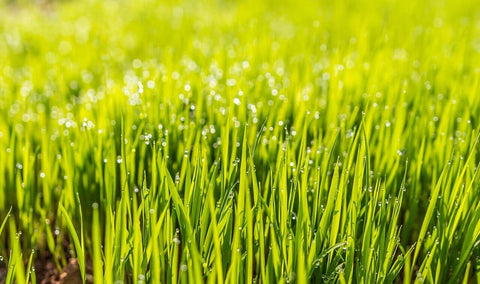As we eagerly anticipate the arrival of spring, homeowners across the country gear up for the annual task of transforming their lawns into lush green havens. In this guide, we'll delve into the world of spring lawn care, placing a spotlight on effective fertilization strategies and the ongoing debate between traditional chemical options and eco-friendly alternatives.
Timing Matters: When to Fertilize Your Lawn
Many lawn enthusiasts may feel the urge to jump into fertilizing early in the spring, but the timing of your application is crucial for optimal results. The sweet spot for the first round of fertilizer is late spring, just before the onset of summer. This ensures that your grass has developed robust root systems, redirecting its energy towards optimal leaf development.
Consider incorporating Spring Lawn Care Set into your routine. This recommended blend promotes healthy growth, strengthens roots, and boosts chlorophyll production, giving your lawn the best start possible.
Debating Fertilizer Use: Chemical vs. Eco Friendly Alternatives
Choosing the right fertilizer involves navigating the debate between traditional chemical options and environmentally conscious alternatives. Some homeowners prefer organic or low-impact products, avoiding chemical fertilizers due to concerns about water contamination from runoff. To address this, consider using organic fertilizers and amendments made from natural materials, providing an eco-friendly alternative to traditional chemicals.

Exploring Lawn Bio stimulants: Natural Growth Boosters
Lawn bio stimulants, available in various forms, can play a significant role in stimulating grass growth. From synthetic to naturally occurring organic materials, options like Humax® and Seamax offer effective solutions. Humax®, a concentrated liquid humic acid, increases nutrient availability, promotes nutrient uptake, and stimulates plant growth. Seamax, with the natural benefits of kelp and humic acids, supplies essential nutrients to crops while enhancing the soil's water-holding capacity, making your lawn more resilient to drought.

Do Lawn Bio stimulants Work?
The efficacy of lawn bio stimulants lies in their ability to foster healthy soil conditions. Products like Bio-Activate, and Supergro 1-0-4 encourage root growth, making lawns more resilient to harsh conditions. Beyond this, good microbes introduced by these products fight off harmful microbes, reducing the occurrence of turf diseases and the need for fungicides.

Environmental Benefits of Bio stimulants
In addition to promoting root health and lawn resilience, bio stimulants contribute to environmental sustainability. They offer a natural and sustainable approach to improving plant growth, reducing the need for excessive inputs. Products like Rhizone revitalize the soil, contributing to eco-friendly gardening practices, and cutting down on the cost of conventional fertilizers.
Your Spring Lawn Care Journey
As you embark on your spring lawn care journey, consider the differing approaches presented here. Whether you opt for traditional fertilizers or explore the benefits of lawn bio stimulants, the key is to strike a balance between achieving a healthy, vibrant lawn and practicing environmentally conscious habits. Choose the strategy that aligns with your values and contributes to the long-term well-being of both your lawn and the planet.
The following descriptions of the products mentioned above ,explain how they can improve your lawn while minimizing environmental impact.
Spring Care 20-3-3 boasts a high nitrogen content, swiftly turning your grass green while sustaining its lushness through summer. Easy to apply, simply mix and water into your landscape for vibrant results.
Humax, a natural product, enhances every facet of your lawn's health. From promoting growth to bolstering disease resistance, its organic formula reduces the need for excess nutrients and water. By breaking up heavy clay soils and improving porosity, Humax ensures nutrients penetrate deeper into the soil and to distribute more evenly. It fosters beneficial microbial activity and robust root growth.
Experience the synergy of Seamax's humic acid and kelp extracts, amplifying each other's benefits for optimal lawn care. Kelp naturally contains a wide variety of plant promoting substances, while humic acid acts as a source of organic matter and assists plants in their nutrient absorption. With a combination of these two ingredients Seamax is ideal for promoting healthy roots and encouraging beneficial micro-organisms within the soil.
Bio-Activate is a game-changer in lawn care, formulated with a potent blend of cytokinins, amino acids, and enzymes sourced from microbial cultures and kelp. These bioactive compounds work synergistically to supercharge plant growth, fortify roots, and bolster disease resistance, ensuring your lawn thrives with vitality.
Supergro 1-0-4 takes soil health to the next level by supplying plant nutrients and activating biological processes in the soil. By fostering a rich, fertile environment, Supergro 1-0-4 encourages thicker, lusher growth while reducing the incidence of disease, sparing you the hassle of spot lawn replacements. Its innovative formula also taps into beneficial microorganisms to unlock bound phosphorus and harness atmospheric nitrogen, providing a sustainable energy source for your plants.
Rhizone with natural growth promoters and amino acids ignite robust root development and amplify nutrient uptake. By empowering grass to tap into its natural reserves and achieve peak performance, Rhizone sets the stage for a resilient, picture-perfect lawn from the ground up.






